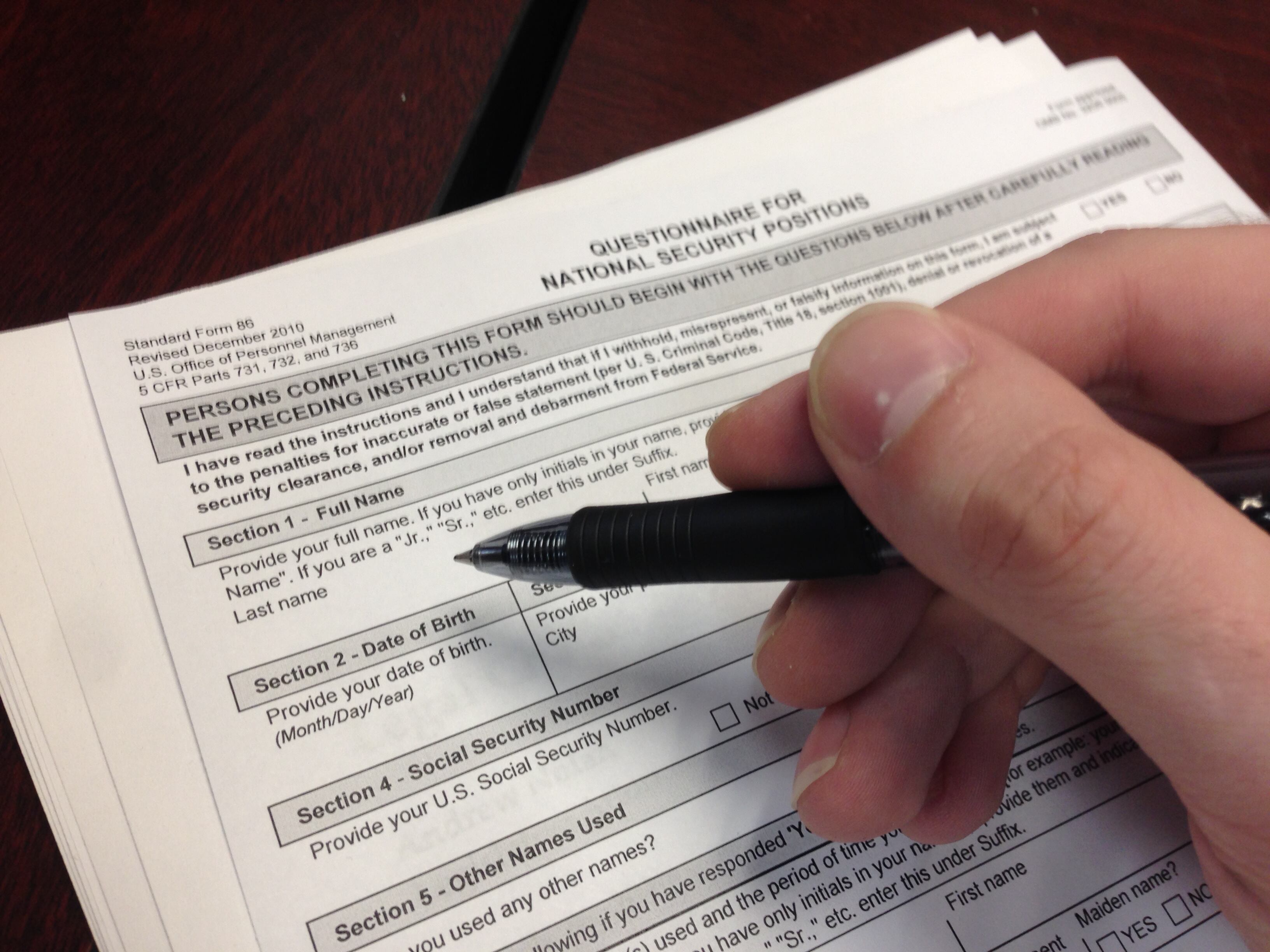A government backlog of 700,000 security clearance reviews has led agencies like the Defense Department to inadvertently issue interim passes to criminals — even rapists and killers — prompting calls for better and faster vetting of people with access to the nation’s secrets.
The pileup, which is government-wide, is causing work delays for both federal and private intelligence efforts. It takes about four months to acquire a clearance to gain access to “secret” information on a need-to-know basis, and nine to 10 months for “top-secret” clearance.
Efforts to reduce the backlog coincide with pressure to tighten the reins on classified material. In recent years, intelligence agencies have suffered some of the worst leaks of classified information in U.S. history. Still, calls for a faster clearance process are getting louder.
“If we don’t do interim clearances, nothing gets done,” Dan Payne, director of the U.S. Defense Security Service, said last week at an intelligence conference.
Yet Payne described handing out interim clearances as risky business. On the basis of partial background checks, people are being given access to secret and top-secret information sometimes for long periods of time, he said.
“I’ve got murderers who have access to classified information,” he said. “I have rapists. I have pedophiles. I have people involved in child porn. I have all these things at the interim clearance level and I’m pulling their clearances on a weekly basis.”
“We are giving those people access to classified information with only the minimum amount of investigation. This is why we have to fix this process. This is why we have to drive these timelines down.”
Payne didn’t say how many criminals his agency has discovered, if their offenses were new or old, or if any of them had mishandled classified material. Efforts to reach him for this story were unsuccessful.
People being investigated for interim clearances are subject to background checks, too, but quick access to state and local records can be challenging, said a former Defense Department official, who was not authorized to speak about the issue and commented only on condition of anonymity.
More than 4.3 million people hold security clearances of various levels, according to the Office of the Director of National Intelligence. They include nearly 3 million at the “confidential” or “secret” level and more than 1 million at the “top secret” level.
Checking federal employees and private contractors is a laborious process that requires an extensive background check and an effort to judge a person’s trustworthiness.
Ninety-five percent of all background investigations are conducted by the National Background Investigations Bureau, which does some of the work itself and contracts the rest to private firms.
The backlog grew significantly after the government stopped doing business with a contractor that suffered a data breach in 2014. That depleted the government’s capacity to do investigations by 60 percent, said Charles Phalen, director of the investigations bureau.
Hundreds of new investigators have been hired since, Phalen said, but the backlog is “still way high.”
He and other officials think the process needs to be updated to ensure the government can spot possible problems in real time.
Is a clearance holder dealing with money woes or personal problems, such as alcohol or drug addiction? Is there unexplained foreign travel, questionable use of computer networks, or other issues that might point to possible leaks?
Right now, clearance holders are reinvestigated about every five years, adding to the background checks for first-time applicants. Intelligence officials, industry leaders and lawmakers say continuous monitoring and evaluation are preferable.
In today’s fast-paced world, they argue, it doesn’t make sense to wait years to find out someone is experiencing financial problems, making that person susceptible to selling classified information.
Many U.S. intelligence agencies already are on board. The Defense Department also has begun more regular vetting. It has 500,000 people — contractors and military personnel among them — enrolled in what it calls “continuous evaluation,” which involves regular checks through law enforcement and other databases. Up to 1 million will be enrolled by the end of the year, Payne said.
The improved vetting has led to 48 people losing their clearances based on information uncovered years before they would have been up for their next scheduled review. Several hundred additional cases have been flagged for additional investigation.
Sen. Mark Warner of Virginia, the Senate intelligence committee’s top Democrat, said an overhaul of the clearance system is long overdue, particularly if the government hopes to continue to attract top-notch workers and recent graduates.
And Vice Adm. Jan Tighe, deputy chief of naval operations for information warfare and director of naval intelligence, said the backlog is threatening the civilian workforce’s readiness.
“We are losing talent to other places,” Tighe said.
The backlog also is complicating transitions of mid-career intelligence professionals from agency to agency and in and out of private industry. It takes time to process clearances for these transfers, too.
Over the years, various executive orders and legislation have called for change — none successfully.
“This is one of these processes that have been unchanged for decades,” said Maj. Gen. Michael Groen, the Marine Corp’s director of intelligence. “It’s screaming for a different way to do business.”
Intelligence professionals say serious changes are needed in the entire system, which dates to the late 1940s. That was long before the internet, social media, cyberattacks and massive classified disclosures like the National Security Agency leak perpetrated by Edward Snowden.
“I do not think this is one of lacing up our shoes tighter and putting more people against it,” said Sue Gordon, principal deputy national intelligence director. “We have to reimagine how this is done.”





